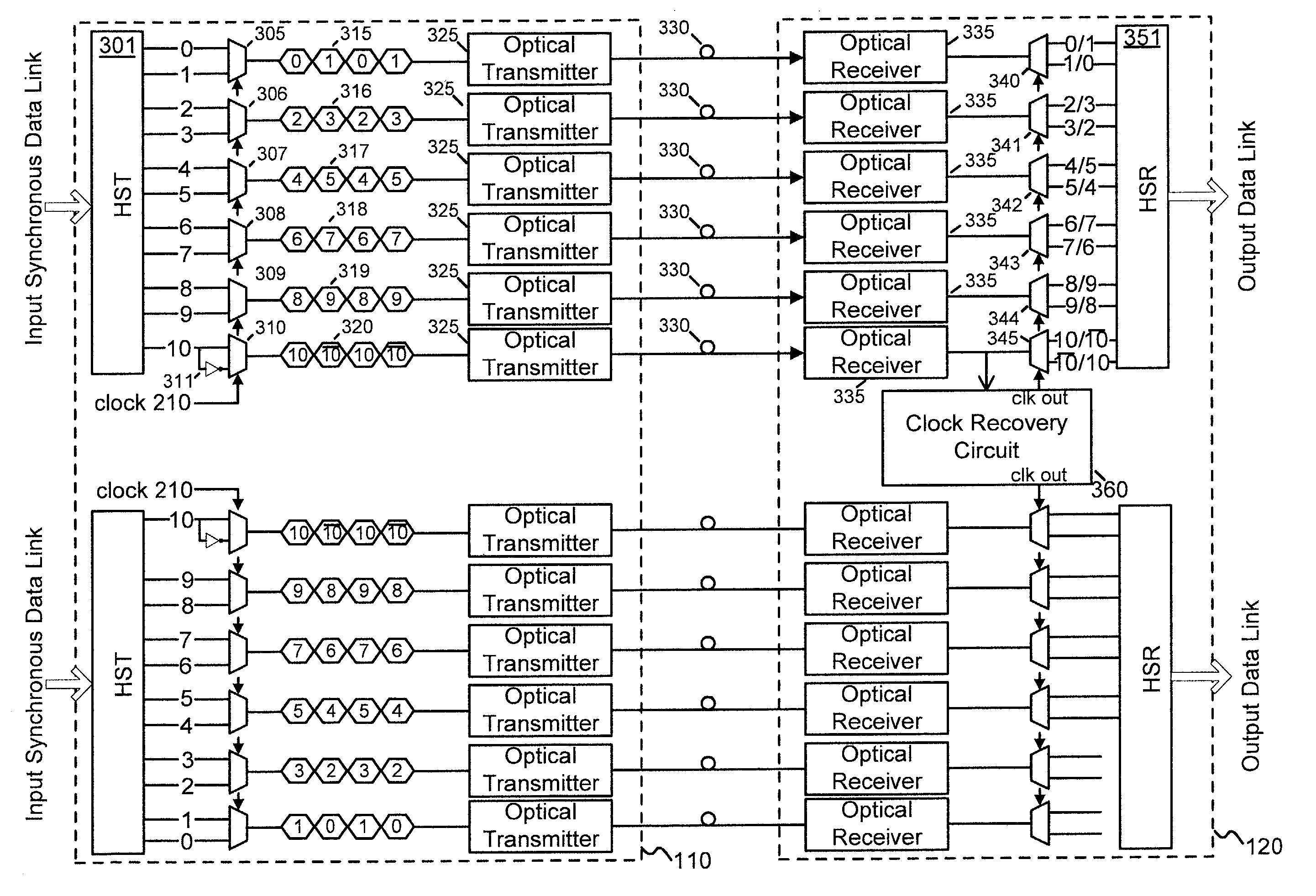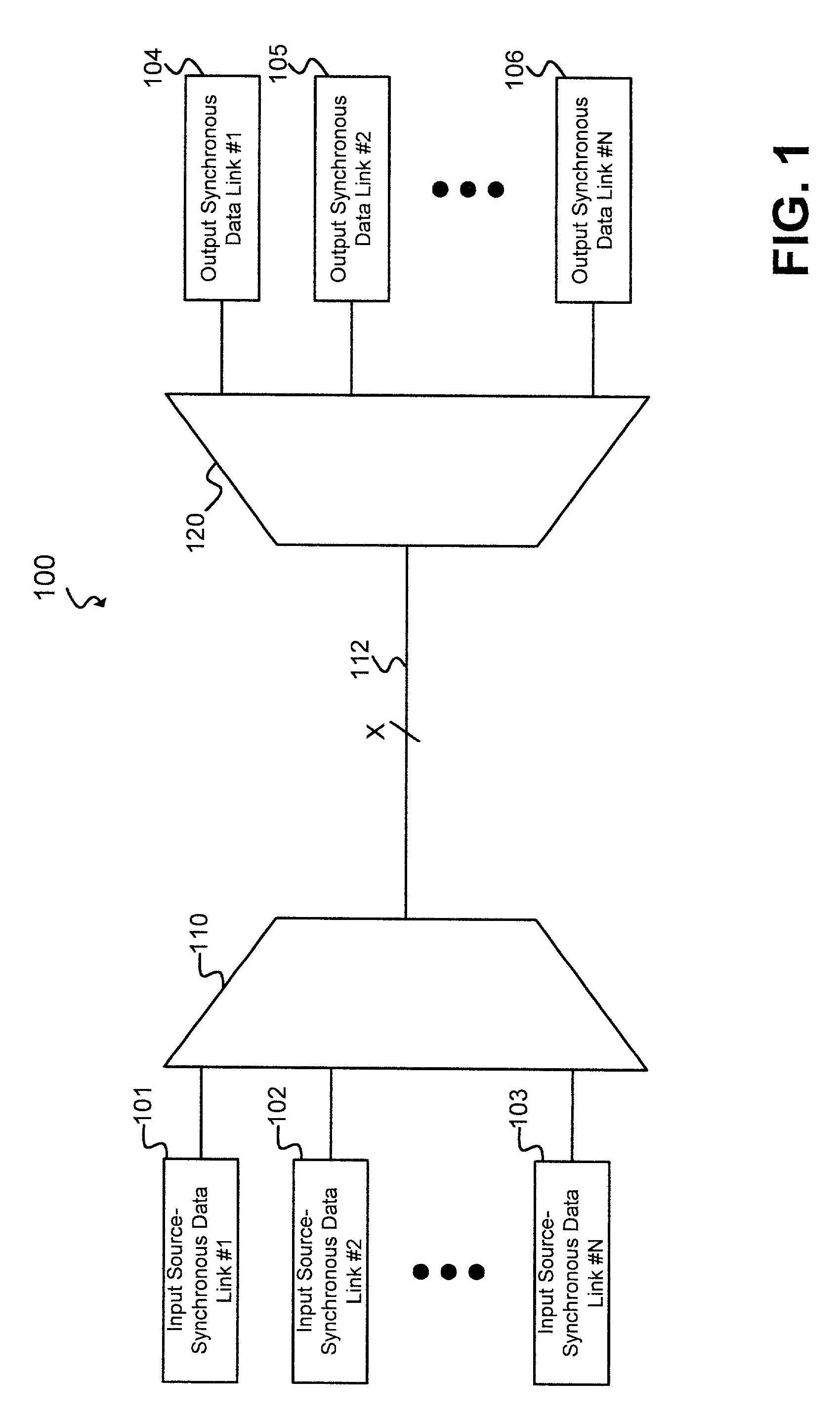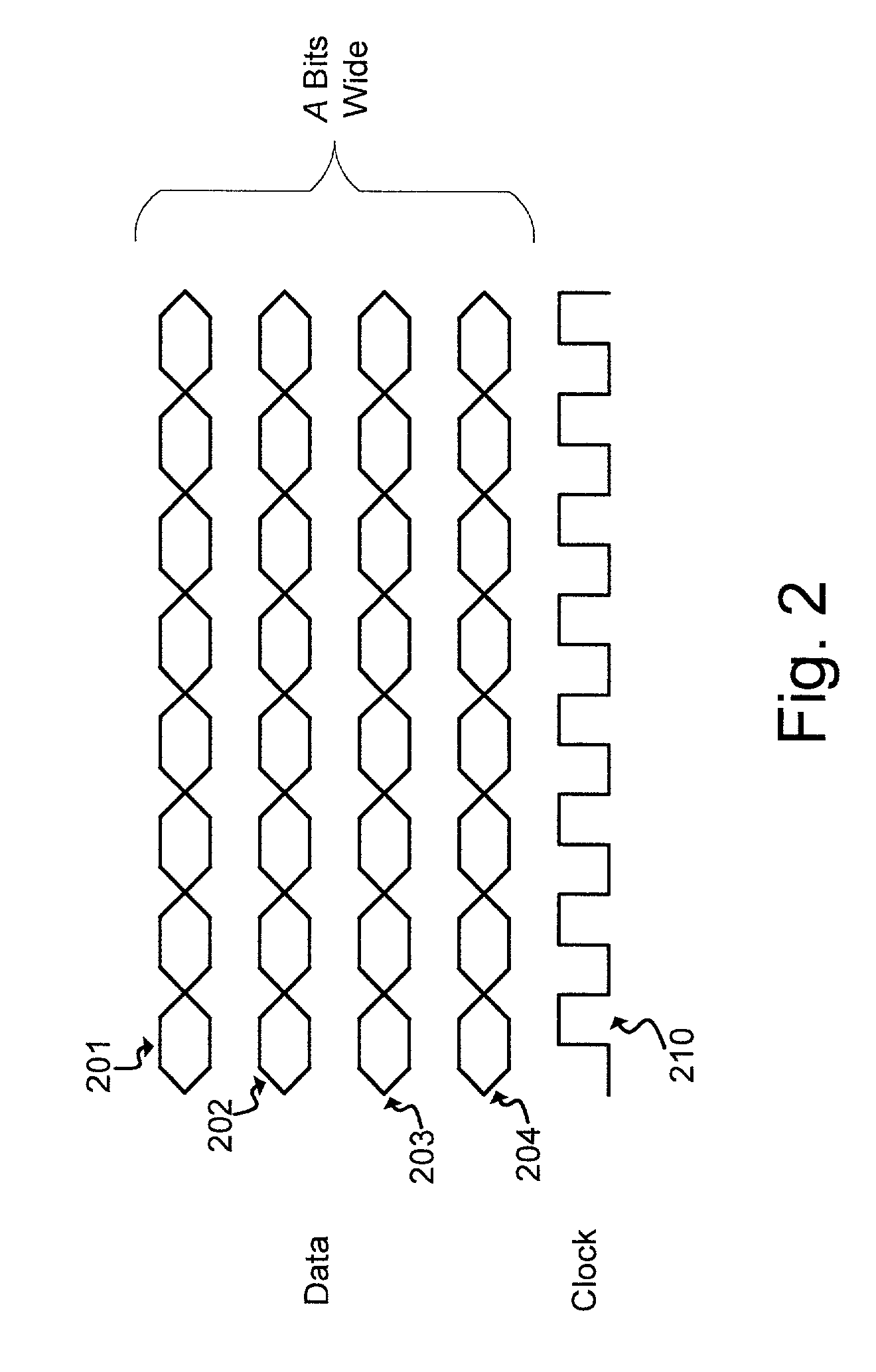Source synchronous link with clock recovery and bit skew alignment
a synchronous link and source technology, applied in the field of high-speed data transmission, can solve the problems of high cost, disadvantage, precise clock and timing requirements, etc., and achieve the effect of improving the density of links and efficient data transmission
- Summary
- Abstract
- Description
- Claims
- Application Information
AI Technical Summary
Problems solved by technology
Method used
Image
Examples
Embodiment Construction
[0021]The following detailed description of the invention refers to the accompanying drawings. The same reference numbers are sometimes used in different drawings to identify the same or similar elements. Also, the following detailed description does not limit the invention. Instead, the scope of the invention is defined by the appended claims and equivalents of the claim limitations.
[0022]As described herein, a transmission system converts a plurality of synchronous signals for transmission onto a physical link. In one embodiment, transmission bandwidth is increased by embedding a clock signal in the converted signals.
[0023]FIG. 1 is a block diagram illustrating a data transmission system 100 consistent with the principles of the invention. Data transmission system 100 includes N input synchronous data links 101–103, a multiplexing unit 110, a link 112, a demultiplexing unit 120, and N output synchronous data links 104–106. Each data link 101–103 may carry data signals transmitted ...
PUM
 Login to View More
Login to View More Abstract
Description
Claims
Application Information
 Login to View More
Login to View More - R&D
- Intellectual Property
- Life Sciences
- Materials
- Tech Scout
- Unparalleled Data Quality
- Higher Quality Content
- 60% Fewer Hallucinations
Browse by: Latest US Patents, China's latest patents, Technical Efficacy Thesaurus, Application Domain, Technology Topic, Popular Technical Reports.
© 2025 PatSnap. All rights reserved.Legal|Privacy policy|Modern Slavery Act Transparency Statement|Sitemap|About US| Contact US: help@patsnap.com



